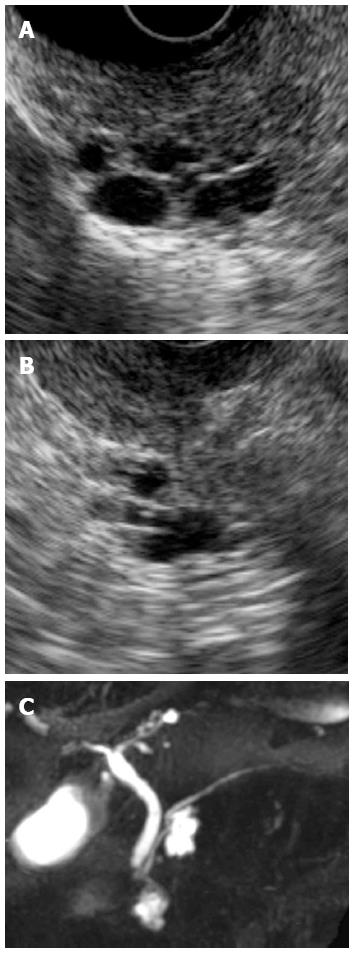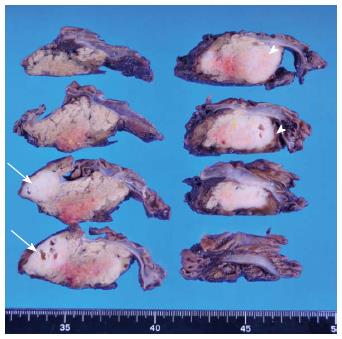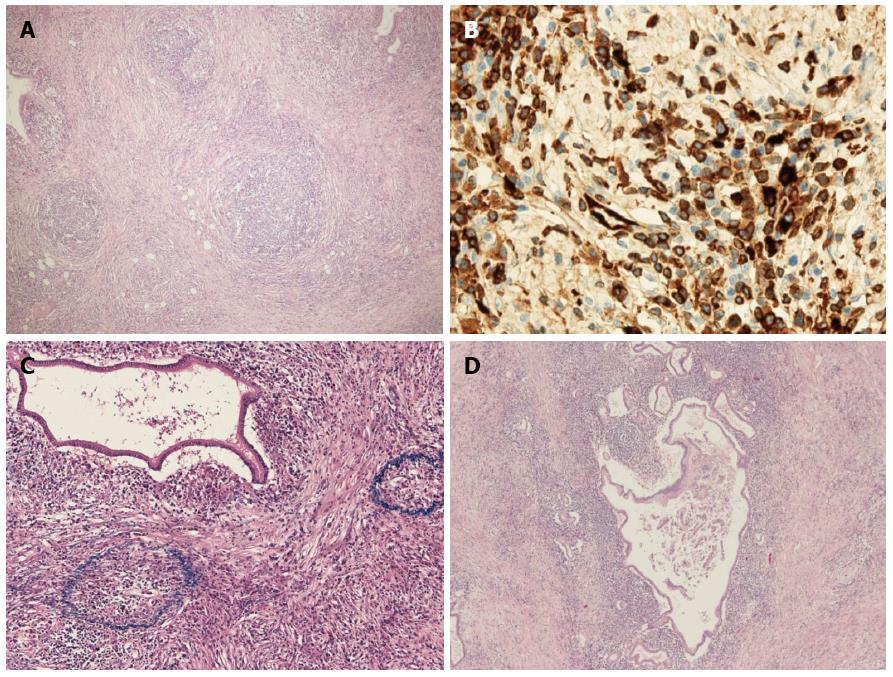Copyright
©2013 Baishideng Publishing Group Co.
World J Gastroenterol. Dec 21, 2013; 19(47): 9127-9132
Published online Dec 21, 2013. doi: 10.3748/wjg.v19.i47.9127
Published online Dec 21, 2013. doi: 10.3748/wjg.v19.i47.9127
Figure 1 Imaging studies from the initial examination.
A, B: Endoscopic ultrasonography showed 2 multilocular cysts in the pancreas head; C: Magnetic resonance cholangiopancreatography showed 2 cystic lesions without dilation of the main pancreatic duct in the pancreas head.
Figure 2 Diffusion-weighted magnetic resonance imaging.
A, B: In 2008, diffusion-weighted imaging showed no signal in the pancreas; C, D: In 2011, diffusion-weighted imaging showed high-intensity signals (arrow-head) corresponding to both cystic lesions in the pancreas.
Figure 3 Imaging studies at follow-up examination.
A, B: Endoscopic ultrasonography revealed solid lesions in or around both cystic lesions in the pancreas head. Hyperechoic foci and strands were observed in these lesions; C: Magnetic resonance cholangiopancreatography showed a reduction in the diameter of both cystic lesions.
Figure 4 Computer tomography scan.
A, B: Both cystic lesions (arrow-head) showed a lower density than the surrounding pancreatic parenchyma during the pancreatic parenchymal phase; C, D: Both cystic lesions (arrow) appeared as iso-dense in the equilibrium phases.
Figure 5 Macroscopic findings.
The macroscopic examination revealed 2 whitish solid lesions with multilocular cysts (arrow, and arrow-head). Each lesion was solitary and indicated no gross continuity.
Figure 6 Microscopic findings.
A: Each solid lesion presented a striform pattern with lymphoid follicles and inflammatory cells (HE, original magnification × 12.5); B: The plasma cells showed positivity for immunoglobulin G4 (HE, original magnification × 200); C: Many obliterating phlebitides were observed (HE, original magnification × 100); D: The multilocular cysts produced mucus and demonstrated a papillary pattern (HE, original magnification × 12.5).
- Citation: Urata T, Naito Y, Izumi Y, Takekuma Y, Yokomizo H, Nagamine M, Fukuda S, Notohara K, Hifumi M. Localized type 1 autoimmune pancreatitis superimposed upon preexisting intraductal papillary mucinous neoplasms. World J Gastroenterol 2013; 19(47): 9127-9132
- URL: https://www.wjgnet.com/1007-9327/full/v19/i47/9127.htm
- DOI: https://dx.doi.org/10.3748/wjg.v19.i47.9127














